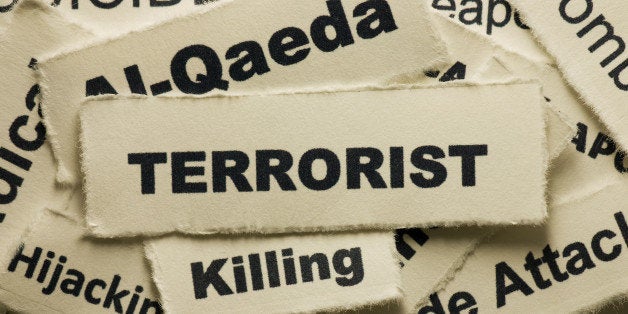
When violence and death dominate the headlines, descriptions of the perpetrators and those hurt help us bring a bit of order to tragedy. Whether discussing the deaths of hostages at the hands of ISIS, the murder of three young adults in Chapel Hill, or other recent incidents, the labels given to the individuals involved connect them to others in powerful ways, both positive and negative. Without ignoring the sorrow and pain that acts of violence have brought to families, friends, and even many strangers, reflecting on the ways we describe the people involved highlights the strategic power of naming.
Everyone can be identified according to many labels. The murder victims in Chapel Hill have been described as students, family members, Muslims, and Syrian, and the accused murderer as an atheist, anti-theist, white male, and terrorist. Debates over which label to apply often occur with tragedies as the choices have consequences. A narrative about the Chapel Hill murders that forefronts religious identification, with an atheist executing Muslims, has become the dominant frame, despite the police narrative that has emphasized a dispute over parking. Debates also developed over descriptive framing of the bombing and shooting in Norway several years ago. Some described the actions of Anders Breivik, the Norwegian attacker, as involving ideology, religious identification, or cultural differences. Which labels dominate descriptions of an event often provide a frame for assuming motivations behind that incident. While humans often operate out of a complicated set of motivations, particular labels encourage people to make sense of an event and its cause in terms of a single motivation.
In another recent incident, the strategic nature of the labels is even clearer. A man visiting his son in Madison, Alabama, was severely injured by a police officer (who has been fired and arrested) at least partially due to communication problems. Descriptions of the incident have emphasized the victim's Indian citizenship, his familial relationship as a grandfather, and, particularly in the Indian media, his regional identification within India. Of the articles that I have reviewed, only the account from the Universal Society of Hinduism emphasized the victim's identification as a Hindu. Labeling the victim as a Hindu highlighted the organization's position as defender of Hindus and connected the victim to others who identify as Hindus.
While labels can emphasize a positive solidarity, they often serve to critique or dismiss individuals and constructed groups. Identifying the accused murderer of the UNC students as a terrorist condemns his actions by associating them with others labeled terrorists, including al Qaeda, Breivik, and ISIS, whereas focusing on his identification as an angry white man, a student, or a husband creates a different impression. Generating commonality by employing a label, whether to marginalize others or unite a community, hides divisions among those who are given the same identification. This commonality, then, can lead to false comparisons, suggesting that any atheist, Muslim, or Christian is dangerous because of what others have done who hold the same identification, while ignoring that victims and perpetrators often hold similar identifications. For example, many victims of ISIS and those fighting ISIS can be identified as Muslims. Some authors even construct comparisons that equate people commonly identified as antagonistic in order to condemn by association political and social positions that an author dislikes.
Pierre Bourdieu (1930-2002), the famous sociologist, discussed the power of naming "to establish the structure of the world," a structure that gains power the more widely the name is recognized (Language and Symbolic Power, 105). As people strategically employ labels to connect with some and distance themselves from others, the diversity that each label hides is significant. Acknowledging the power of these labels becomes an important step to address the stereotypes of fear that too often encourage violence, even if those general labels help us make sense of the tragedies.